Can You Do Tuckpointing in Winter?
Your brick home was built to last—but not without a bit of maintenance. As your mortar deteriorates, you need tuckpointing to restore the look and function of your masonry.
If you notice your mortar joints cracking and crumbling in cold weather, it may be time to schedule tuckpointing services. But is winter the right time for tuckpointing? Keep reading to learn how weather can affect tuckpointing and how you can protect brickwork in winter.
What Is Tuckpointing?
Over time, cold weather and moisture can cause brick and mortar to crack and crumble, weakening your building. Tuckpointing is the process of removing and replacing deteriorated mortar and bricks to improve the look and strength of your masonry building. Your tuckpointing company will carefully match new bricks and mortar to your masonry to make sure the work blends in seamlessly and looks original to the building.
Can Cold Weather Affect Tuckpointing?
Yes, cold weather can affect the ability to tuckpoint. The ideal conditions for tuckpointing are between 40 and 90 degrees Fahrenheit. If it’s too hot or cold, your masonry work may not cure correctly, which can affect its durability.
The Challenge of Tuckpointing in Cold Weather
Just because it’s cold outside doesn’t mean you can’t schedule masonry work. However, these conditions can affect the strength and quality of your work:
Freezing Temperatures
Mortar strengthens as it dries, and cold weather can slow down the drying process. Additionally, mortar is a mix of bonding agents and water, which can expand and cause cracking when it freezes. Even if it’s above 40 degrees Fahrenheit during the day, the temperature could drop at night while your mortar is still drying and create cracks.
Cold temperatures and windy conditions can also lower the water content in mortar while it’s being mixed. A dry mixture leads to weak mortar joints when it dries.
Moisture
Wet conditions caused by snow, sleet, and rain also affect your tuckpointing job. Moisture may keep your mortar from drying out, and heavy rain can wash new mortar away. It’s best to wait 24 hours after heavy rain or snow to begin tuckpointing to prevent problems.
Tips for Laying Brick in Cold Weather
Fall has passed, and so have the ideal conditions for laying bricks and mortar. But you may not have a choice to get tuckpointing done in winter if your masonry is showing signs of severe damage. Luckily, there are ways to combat the challenges of winter tuckpointing. Here’s what you can do to increase the likelihood of success:
Choose a Reputable Tuckpointing Contractor
If you need tuckpointing done in winter, the first step is to research contractors in your area. Experienced cold-weather masonry contractors will have the knowledge and tools to deliver good results, even in less-than-ideal weather conditions. Ask prospective contractors about their winter tuckpointing process.
Check the Forecast
A warm spell in winter may provide the perfect window for tuckpointing. Your tuckpointing professional will check the forecast before scheduling work to see if temperatures are predicted to stay above freezing. They’ll also make sure there will be no heavy precipitation the day before or immediately after they tuckpointing.
However, the forecast isn’t always the best indicator of what’s to come, and some issues can’t wait for the weather to break. If the weather conditions are less than ideal and there’s no room to reschedule, your masonry contractor may need to take extra precautions.
Use Mortar Additives
Since cold weather can keep mortar from curing, there are additives your tuckpointing contractor can use to speed up the drying process in winter. They’ll choose the proper additives for the weather conditions so the mortar produces extra heat as it dries.
Keep Materials Dry and Warm
Tuckpointing materials, including mortar and bricks, must be warm and dry when applied. Your tuckpointing contractor may need to set up tents to shield materials from moisture and store them on heated surfaces. They may also need to heat mortar as they mix it and work in small batches so it doesn’t dry out too quickly.
Trap Heat With Protective Covers
Mortar may not cure properly if the temperature drops or moisture increases. Protective covers help trap heat and prevent wind from drying out mortar too quickly. Tarps may provide enough protection depending on the conditions, but a heated enclosure may also be necessary. Your tuckpointing contractor will decide which protective materials are necessary based on the weather conditions and job size.
Need Winter Tuckpointing in St. Louis?
Learn how Approved Home Improvements guarantees safety, quality, and consistency during every project.
Turn to Approved Home Improvements for Tuckpointing in Cold Weather
The St. Louis weather can take a toll on your brickwork and affect your building’s ability to withstand winter conditions. If your home or business needs tuckpointing to get through the season, turn to Approved Home Improvements. We have over 30 years of experience performing high-quality tuckpointing for St. Louisans in all weather conditions. Our proven process ensures your new brickwork looks great, matches the original look of your building, and, most importantly, lasts for years to come.
Since problems with brickwork don’t always show up right away, Approved Home Improvements offers a one-year warranty to make sure you’re happy with our work beyond winter. Plus, our initial tuckpointing consultation is completely free of charge. We can assess your masonry to determine if you need winter tuckpointing or the work can wait until spring.
Ready to see if you need tuckpointing done this winter? Contact us today to schedule a free consultation or explore our services to learn more about how we can help restore your home or business.



